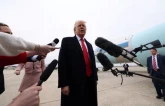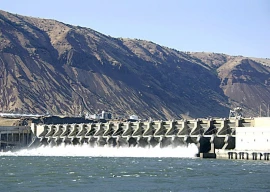
Meanwhile, the dwindling foreign exchange income is making it increasingly impossible to pay for our essential imports without adding to the already heavy debt burden which does not come cheap any more. In fact, the flow of dollar dole is drying up as donors are refusing to fund our security-related extravaganza with their taxpayers’ money. Exports of merchandise declined 13 per cent at $17.3 billion in the July-April period from $19.9 billion in the same period last year. The decline in exports was mainly attributed to slow proceeds of the textile sector, which accounts for about 56 per cent of total exports. In view of the above, the export target of $35 billion set to be achieved by 2018 in the three-year strategic trade policy announced earlier this year appears more like an overambitious projection totally divorced from ground realities.
According to a hard to accept official claim, the decline in export earnings is due mainly to falling commodity prices rather than declining demand. A recent World Bank report attributes loss of competitiveness of our exports to the recent appreciation of the real exchange rate. However, last year, textile exports had declined mainly due to a decrease in low-value added exports because of the structural bottlenecks and lower demand from China which constitutes 10 per cent of Pakistan’s overall exports, as also from Bangladesh — major buyers of Pakistani cotton yarn and fabric.
The membership of the All Pakistan Textile Mills Association (APTMA) is perhaps the most genuine representative of our country’s rich and powerful. What they are facing today are not losses but only an insignificant decline in their profit margins. And even if this decline in profit margins is regarded as losses, their past earnings which more often than not literally amounted to windfall gains that had included over-invoicing of import of machinery and intermediaries, under-invoicing of exports, pilferage of utilities like electricity, gas and water, tax evasion and avoidance and of course, bank loan write-offs have provided them with enough financial cushion to sustain any further losses for years to come. It is in this context that the official budget-makers should be studying the APTMA’s budgetary proposals for fiscal year 2016-17, seeking a special package for the textile industry, withdrawal of the gas infrastructure development cess, the export re-finance facility, liquidation of pending refunds, regulatory duty on import of synthetic yarns and fabrics, enforcement of a strict regime to control the smuggling of fabrics and garments, allocation of special fund for promotion of drawbacks of local taxes and levies and other similar specialised schemes for textile export promotion.
The APTMA budget paper, also disputing the official claim, to the contrary acknowledges that exports of textiles have witnessed an unprecedented fall in both quantity as well as in value terms in recent years. While it is in the economic interest of the government and the nation to keep the textile industry properly motivated to keep promoting exports of textile goods, the official managers would do well to keep the rupee exchange rate firmly linked to its realistic strength. And at the same time, they should be seriously considering diversifying the country’s exports and their destinations to reduce our overwhelming dependence on one single export commodity.
Published in The Express Tribune, May 14th, 2016.
Like Opinion & Editorial on Facebook, follow @ETOpEd on Twitter to receive all updates on all our daily pieces.















1732776989-0/Untitled-design-(71)1732776989-0-270x192.webp)



COMMENTS
Comments are moderated and generally will be posted if they are on-topic and not abusive.
For more information, please see our Comments FAQ